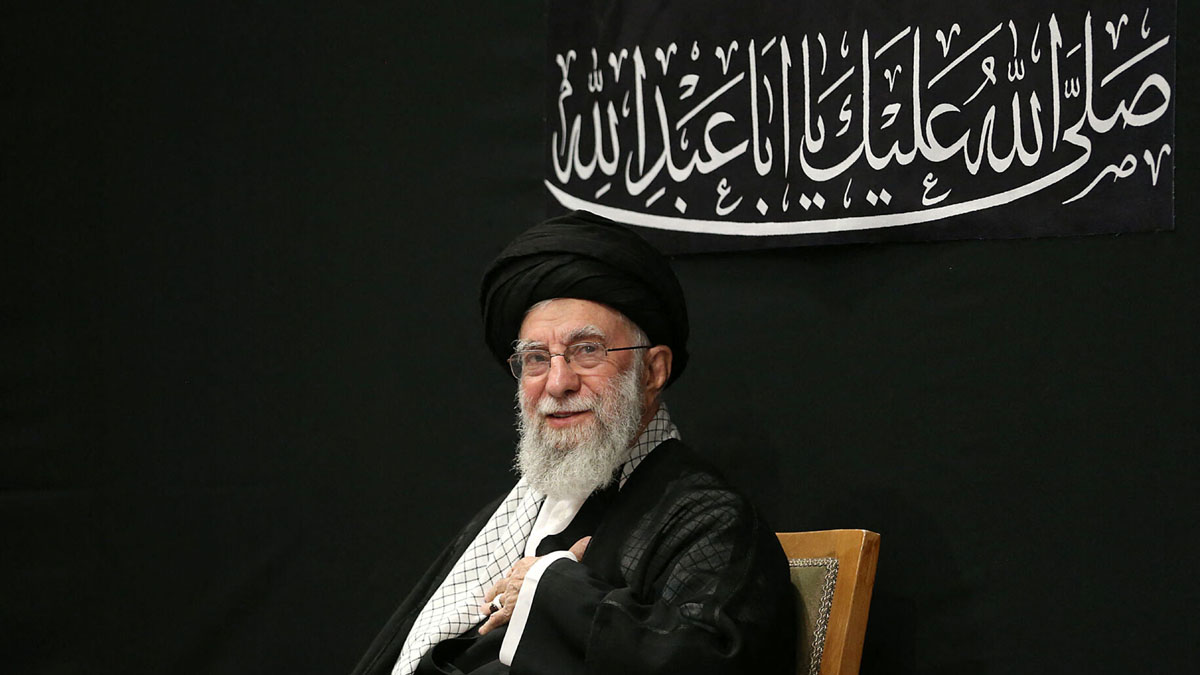Iran-Israel conflict: Supreme leader Ayatollah Khamenei re-emerges after bunker exile, attends Ashura ceremony
 This handout picture released by the office of Iran's Supreme Leader Ayatollah Ali Khamenei on July 5, 2025 shows him attending a mourning ceremony in Tehran marking the ninth day of the Islamic month of Muharram in the lead-up to Ashura, a 10-day period commemorating the seventh century killing of Prophet Mohammed's grandson Imam Hussein. (Photo by LEADER OFFICE / AFP) / === RESTRICTED TO EDITORIAL USE - MANDATORY CREDIT "AFP PHOTO / HO / KHAMENEI.IR" - NO MARKETING NO ADVERTISING CAMPAIGNS - DISTRIBUTED AS A SERVICE TO CLIENTS ===
This handout picture released by the office of Iran's Supreme Leader Ayatollah Ali Khamenei on July 5, 2025 shows him attending a mourning ceremony in Tehran marking the ninth day of the Islamic month of Muharram in the lead-up to Ashura, a 10-day period commemorating the seventh century killing of Prophet Mohammed's grandson Imam Hussein. (Photo by LEADER OFFICE / AFP) / === RESTRICTED TO EDITORIAL USE - MANDATORY CREDIT "AFP PHOTO / HO / KHAMENEI.IR" - NO MARKETING NO ADVERTISING CAMPAIGNS - DISTRIBUTED AS A SERVICE TO CLIENTS ===
Iran’s supreme leader, Ayatollah Ali Khamenei, appeared in public last night, for the first time since the start of the 12-day war with Israel last month, following weeks of speculation about his health and safety. State television broadcast footage of the 85-year-old leader attending an Ashura ceremony at the Imam Khomeini Mosque in Tehran, where hundreds of supporters responded with emotional chants and patriotic songs.
Khamenei’s reappearance comes after an unprecedented period of absence from public view during the most intense military conflict between Iran, Israel and the United States in recent years. Reports from Iranian and foreign sources claimed the cleric had taken refuge in a secure underground bunker with minimal access to outside communications, raising questions about his condition and the stability of Iran’s leadership.
During the conflict, both Israeli and American leaders openly discussed targeting the Iranian leadership. US President Donald Trump described Khamenei as an “easy target,” while Israeli Prime Minister Benjamin Netanyahu, when asked if eliminating the supreme leader would escalate the war, said it would instead “end” it. According to intelligence leaks, an Israeli plan to assassinate Khamenei was considered but ultimately not approved.
Khamenei broke his silence last week in a brief video message following US airstrikes on Iran’s nuclear facilities. But his prolonged absence from official functions had no precedent in his 35-year rule, fuelling speculation of either illness or immediate danger.
Yesterday, however, Khamenei walked into the annual Ashura ceremony dressed in a black clerical robe and checkered kaffiyeh. The audience, including Iran’s vice president, justice minister and parliamentary speaker, stood up, chanting “Heydar, Heydar,” a traditional Shia slogan. Khamenei did not speak publicly but sat alone on a chair beside the stage while other officials sat on the floor.
Footage showed him turning to Mahmoud Karimi, a popular religious vocalist known for his Ashura performances, and whispering a request. Karimi returned to the microphone to announce that the supreme leader had asked for a rendition of the patriotic anthem “Ey Iran,” a song that gained renewed popularity during the recent conflict. As Karimi sang, Khamenei beat his chest in rhythm with the crowd, many of whom appeared visibly moved.
Iranian media devoted extensive coverage to the event, portraying the leader’s return as a sign of resilience. The ceremony coincided with Ashura, Shia Islam’s most solemn religious observance, marking the martyrdom of the Prophet’s grandson Hussein in 680 CE. In Iranian history, Ashura has often served as a vehicle for political messaging, from the 1979 revolution to protests in recent years.
Khamenei’s appearance follows a warning from President Trump, who said on Friday that the United States would not tolerate any Iranian attempt to restart its nuclear programme. “If they did start, there’d be a problem. We wouldn’t allow that to happen,” Trump told reporters aboard Air Force One.
Middle East